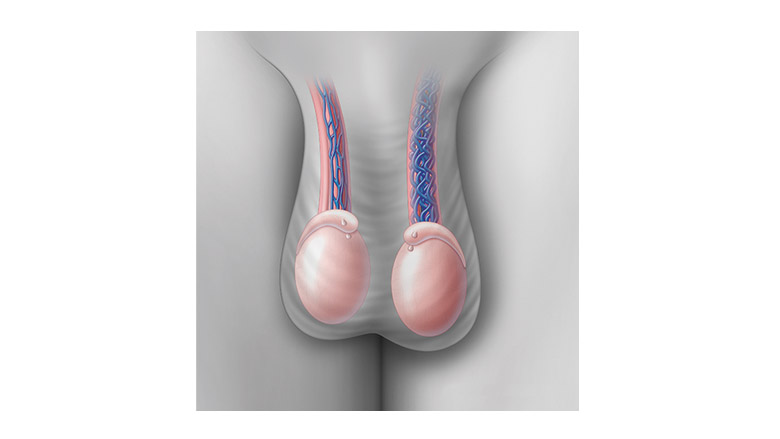The varicocele is a varicose important (varicose) veins of the spermatic cord (located in scholarships, over and around each testicle).

With Lesplantesafricaines, discover a natural treatment to treat Varicocele
Natural herbal tea against varicocele
Herbal tea is a vasculoprotective and venotonic. It is a natural remedy that cures varicocele successfully by strengthening the valves or valves located in the veins of the spermatic cords. The veins then become tonic and tenacious to facilitate the dynamic rise of blood along the veins to reach the most important veins such as the left renal vein and the inferior vena cava.
This natural remedy is the miracle solution to avoid surgery . It will allow you to regain all your fertilizing power. It has proven its effectiveness with dozens of resolved cases. This is one of the best natural remedies to cure varicocele and prevent surgery . Using herbal teas to cure varicocele usually gives excellent results as it helps prevent the operation . The solution to cure varicocele is in plants.
Click on the image below to discover the treatment

Tel / whatsapp: +229 99 546 463
What is varicocele?
Varicocele is an unusual enlargement of the veins in the scrotum (loose skin holding the testes, veins, and arteries), also called testis varicocele, and a layman calls it otherwise, such as varicocele, varicocele, varicocele, varicocele, varicocele, varicocele , varicocele, varicocele These veins normally supply blood to the reproductive glands. If an abnormality such as varicocele occurs, blood blockage occurs, harms male fertility, and can also affect erection or testosterone level in men.
This is most evident in the standing posture and vice versa. Simply put, varicocele is a varicose vein in the scrotum just like varicose veins in the legs. The causes of varicose veins dysfunction of the legs and testicles are similar. The importance of this disorder is all the greater since it is the most common reason for infertility problems in men. It reduces a man's sperm count and also affects its quality.
However, if a varicocele is detected in one of your testes, it affects the sperm production of both testes, sometimes the testes contract due to the effect of varicocele Usually it attacks mainly on the left side, as 85% cases of varicocele occur on the left scrotum, and the remaining 15% tend to appear on both sides simultaneously. Incidents that only occur on the right side are rare. There are 3 main reasons for this predominant event on the left side: The angle at which the left testicular vein enters the left renal vein.
No effective anti-reflux mechanism between testicular vein and renal vein Increased pressure of renal vein because it is located between the superior mesenteric artery and the aorta. This phenomenon is also called the “nutcracker effect.” The prevalence percentage of varicocele in men is alarming. Up to 15% to 20% of men tend to have varicocele at some point in their life. Unfortunately, it's more likely to be prevalent in early adulthood, between the ages of 15 to 30, and is mostly left unnoticed, underdiagnosed, and untreated.
RECIPE TO CURE VARICOCELE NATURALY
Ingredients
quad -cissus
-aframonum melegueta
-Albizia lebeck
-acridocarpus smeathmani
Varicocele: what consequences for fertility?
A man with a varicocele may well not have any fertility problems, but in some people, this venous pathology could have an impact on fertility. The figures also point in this direction: 40% of subfertile men have a varicocele, against only 22% in the general population. However, the links between varicocele and subfertility are not obvious.
" Varicocele is a very common problem for which we do not know very well the consequences on fertility, or the mechanisms involved. There is no link of certainty, only a reasonable doubt ». Varicocele could affect spermatogenesis (the production of sperm) by different mechanisms, all of which are still unknown.
Several hypotheses have been put forward, starting with that of thermoregulation: varicocele would cause the testicle to warm up, which could alter spermatogenesis. Another hypothesis: hormone secretions, antibodies. “ However, no mechanism has been clearly demonstrated physiologically, ” says the specialist.
Causes and risk factors

There are probably several reasons why the veins in the scrotum dilate, for example anatomical: for example, blood flows more slowly when the testicular vein from the pelvis joins the renal vein at almost a right angle. This can cause blood to flow back up to the scrotum and create a varicocele. If the angle of confluence is unfavorable, it is usually on the left side - this is why a varicocele is more common on the left. Other possible causes of a varicocele are a congenital weakness of the vascular wall and - like other varicose veins in the body - weakened venous valves.
A tumor in the pelvis or abdomen is rarely the cause: it can press on the veins and disrupt blood flow. If this leads to congestion of the testis, it is called a "symptomatic" varicocele to differentiate it from a "normal" varicocele.
Varicocele frequency
Varicoceles are common, especially in boys and men between the ages of 15 and 25. Experts estimate that 5 to 15% of all men have a varicocele. In about 90% of them, the varicocele is located in the left half of the scrotum.
Varicocele consequences
It is believed that a ruptured varicose vein in the scrotum can reduce fertility. Varicoceles are more common in men with impaired fertility. It is estimated that about 25 to 37% of all men with reduced sperm quality have a varicocele. However, this does not always affect fertility: many men are normally fertile despite having a varicocele.
Varicocele diagnostic
A doctor can see or smell a larger varicocele with the naked eye. Sometimes you have to press on the stomach during the exam to make the varicose vein fill with blood and become palpable.
Smaller varicoceles can only be recognized by an ultrasound examination ( ultrasound ).



